Table of Contents
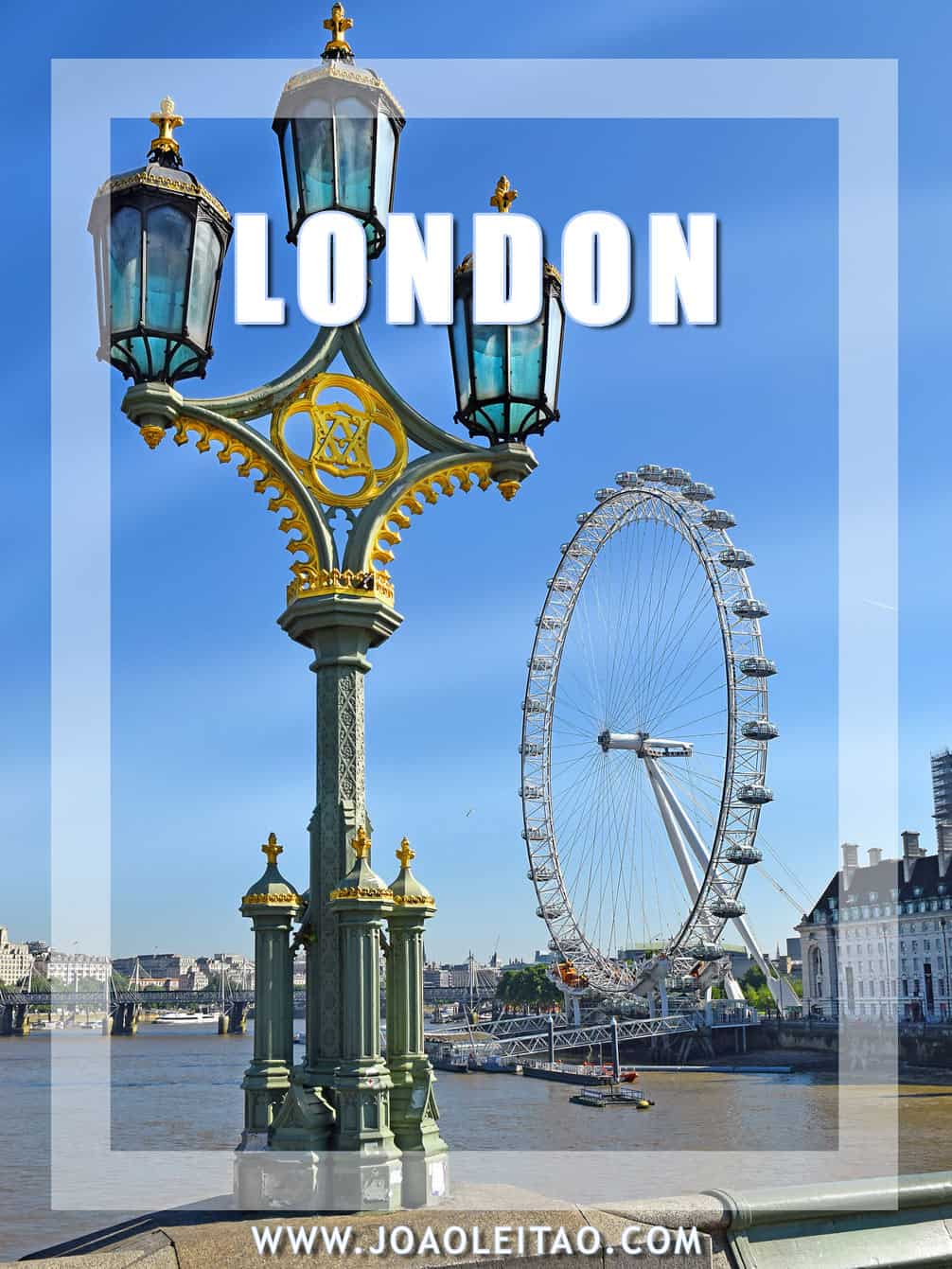
There is a lot, really a lot, to see and do in famous London. Unless you take an extended vacation, it will be hard to see all the top things to do in London. Most must-see tourist attractions are in the center of London. Plan your day well and check out my suggestions.
It pays off to buy tickets in advance for the main monuments, including the Tower of London, to save time. You could be in line for hours! That’s what happened to me the last time I was in London. I didn’t visit the Tower because the lines for the tickets were huge.
London attracts a large number of tourists, and it can be an expensive travel destination. You can still do a lot on a tight budget, though. London is a big city, and if you don’t plan it well, you might end up wasting money and spending most of your time on public transportation.
How long should you stay in London? Well, it all depends on how much time you have, but in doubt, check out my detailed itinerary for 5 Days in London.
London Top 5
1
Monuments
2
Musicals
3
Museums
4
Pubs
5
Festivals
What to visit in London
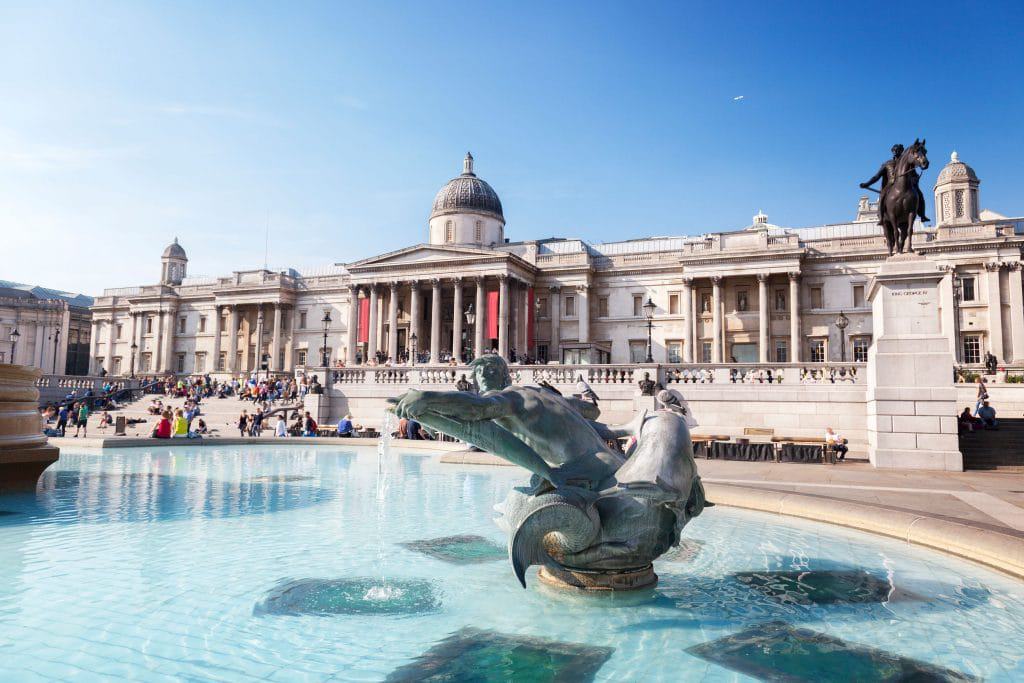
London Eye
Lose the fear of heights and take a ride on the London Eye, the giant wheel with a panoramic view over London. It’s the tallest wheel in the world, offering a spectacular view to over 55 of the most famous monuments in London and all this in just 30 minutes.
Changing of the guard
You can attend the changing of the guard (when the guards change shifts) at Buckingham Palace and Whitehall. In Whitehall, you can get closer to the guards. Those are very serious and choreographed ceremonies and one of the top attractions for anyone visiting the city.
Musicals
Do you love music? Attend a musical in London, they are amazing. Book a ticket for a musical in London in advance. You can get 50% off discounts when buying online.
You can see the most famous musicals such as “Cats,” “We Will Rock You,” “Phantom of the Opera,” “Thriller – Live,” “The Lion King“, “Mamma Mia!” or Wicked Show.
Tower of London
Located on the shore of the Thames, the Tower of London, also known as just The Tower, began construction in 1078 by order of William the Conqueror.
Currently, it houses the crown jewels, a priceless and historical collection, and, unknown to most tourists, a colony of six ravens protected by Royal decree that, according to popular belief, protect the Tower and the British Crown.
These animals are so important for the British that according to local superstition “If the Tower of London ravens is lost or fly away, the Crown will fall and Britain with it.”
Don’t waste time in line to buy tickets for the Tower of London. Plan your trip in advance and buy your ticket here. Last time I was in London I didn’t visit this site because the ticket line was huge.
Tower Bridge
Tower Bridge, a movable bridge over the Thames, is next to the Tower of London and one of the city’s most iconic buildings. It’s still very important for London’s traffic as part of an inner circle route in the city. Its construction began in 1886, and it was open on 30 June 1894. It’s 244 meters long, 42 meters high, and 100,000 vehicles drive by every day.
Westminster Palace & Big Ben
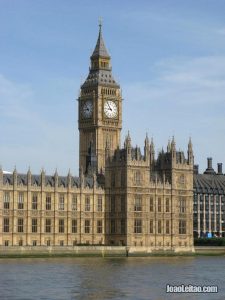
Westminster Palace, also known as the Houses of Parliament or just Westminster, is where the House of Lords and House of Commons are in session. It’s where the laws that rule the British are debated and approved.
The current building dates mostly from the 19th century, but you can see some traces of its medieval past. Although most people think Big Ben is the name of the Clock Tower at Westminster Palace, Big Ben is actually the bell at the tower.
It was named after Sir Benjamin Hall, the First Commissioner of Works responsible for the added bell in 1859 and whose nickname was “Big Ben” because of his size. Until 2012, the tower was just the Clock Tower. That year it became Elizabeth Tower officially to commemorate Queen Elizabeth II’s 60-year jubilee as a Queen.
Hamleys
It’s the oldest toy store in the world! It’s one of the most iconic shops in London, in Regent Street. It dates back to 1760 when William Hamley opened a toy store called Noah’s Ark in High Holborn Street. The third generation of owners changed that store’s and the chain’s name to the current one.
Piccadilly Circus
It’s one of the busiest squares in London with a lot of shops, cinemas, theaters, famous stores, and billboards. It’s one of the areas in Westminster with the most restaurants and a great place to spend an afternoon at an esplanade in London. Here you’ll find many places selling tickets for musicals and theater plays.
Covent Garden
One of London’s cultural and entertainment centers with more than 60 pubs and cafes, some of them classified as historical buildings. Here you can escape the typical touristic museums and landmarks and sit for a pint, English-style. Especially during the summer months there is a lot of entertainment on the streets, and this is the only area where street artists are allowed to perform. Visit The Lamb & Flag on Rose Street, the oldest pub in the area.
British Museum
Of the many art galleries and museums, the British Museum is the one you can’t skip. Considered as one of the best museums in the world, here you can see historical pieces like the Rosetta Stone covered in Egyptian hieroglyphics, and that was crucial to understanding the ancient culture of this civilization.
Buckingham Palace
Located in Westminster, it’s the official residence of the Royal Family of England and the United Kingdom. It’s used for many State ceremonies and celebrations connected to the British Crown. The iconic balcony from where the Royal Family frequently salutes the British subjects is on the east side of the Palace. The palace is open to the public in the summer. If you want to visit the palace, book your tickets in advance because they sell out quickly.
St. Paul’s Cathedral
You can’t skip St. Paul’s Cathedral when visiting London. The dome of the cathedral is the second largest in the world, after Saint Peter’s in Rome. The first cathedral was built in 604 AD but was destroyed in a fire in 675. The cathedral was rebuilt and later destroyed again in the Great Fire of London in 1667.
Madame Tussauds
The most famous wax museum in the world had to be a part of this list. It includes life-size replicas of many personalities in sports, politics, culture, science, socialites, and even fictional characters. It’s a must-visit for those who want to take a selfie with a celebrity, even if it’s just made of wax.
London Pass
London Pass
Get The London Pass and save time and money
- Enjoy access to more than 80 of London’s top attractions, tours, and museums.
- See London’s top landmarks and attractions with a hop-on hop-off bus tour.
- Make use of your 160-page guidebook packed with helpful tips, maps, and information on each attraction
- Skip-the-line at selected attractions
- Get your London Pass instantly on mobile
Order your London Pass online here
Musicals in London
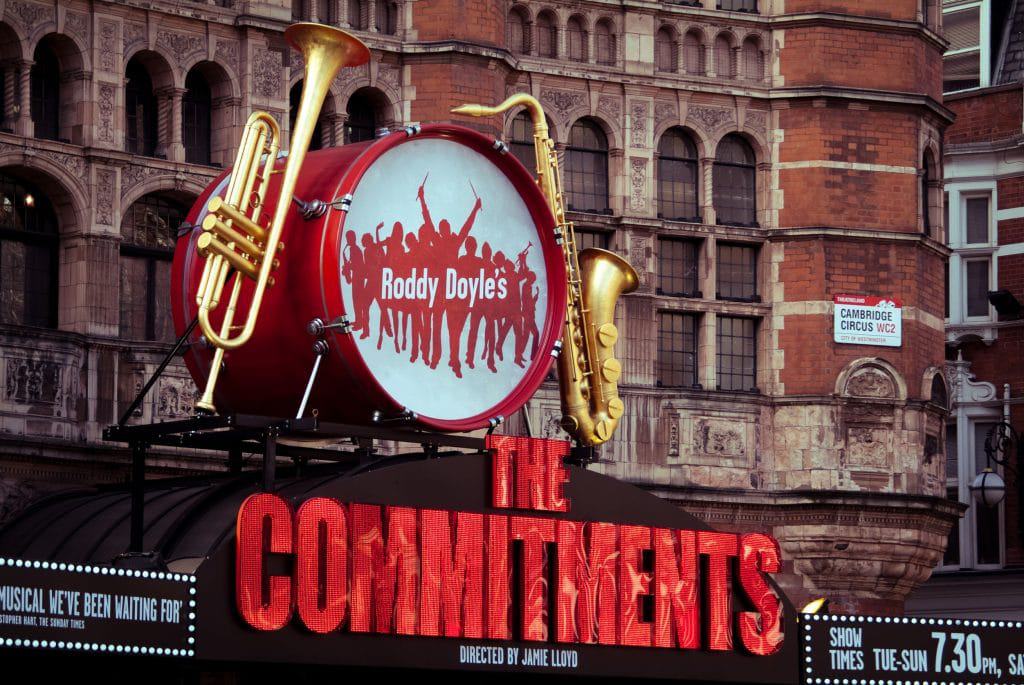
West End is the place in London where most musicals happen, just like in New York most musicals are on Broadway.
There are so many musicals in the British capital that visiting London and not going to a musical is like going to Rome and not seeing the pope! Some are better or more popular than others. In that case, you should follow your heart. You can choose a comedy, or a romantic one, or one more suitable for children if you’re traveling with kids.
Les Misérables
Les Misérables, at Queens Theatre, is one of the musicals that’s been on stage for longer. The story is based on the 1862 novel by Victor Hugo and was adapted as a musical with an original score. It revolves around the struggles of the poor and forgotten people until the French Revolution, with love stories thrown in the musical drama.
The Phantom of the Opera
The Phantom of the Opera musical premiered in London in 1986. The tragic love story between an opera singer and a composer who lives in hiding ashamed of his physical disfigurements was composed by Andrew Lloyd Weber and is a world hit. It plays at Her Majesty’s Theatre, Monday to Saturday at 7:30 pm with an extra session on Thursdays and Saturdays at 2:30 pm.
The Lion King
It’s one of the most seen musicals in the world, based on the animated movie that premiered in 1994. It’s good for all ages, with music and lyrics by Tim Rice and Elton John, and the perfect option for those traveling with kids. The Lion King is playing at the Lyceum Theatre.
Miss Saigon
Inspired by Puccini’s opera Madame Butterfly, the play takes place at the beginning of the Vietnam War. It tells the story of two lovers, an American soldier and a Vietnamese bartender, who are separated during the fall of Saigon as the Communist army takes charge. It’s one of the most acclaimed musicals and was recently nominated for an Olivier award for Best Musical Revival. It won several Tony Awards when it played on Broadway. In London, it’s playing at Prince Edward Theatre.
Mamma Mia!
It’s a romantic comedy based on Abba’s music hits. A show for all ages, remembering the hit songs of the 1980s. Most people already know the story because of the recent movie, but for those who haven’t seen it, the story takes place on a Greek island where a bride tries to find out who her father is at her wedding. It’s playing at Novello Theatre.
Wicked
You can see the musical Wicked – The Untold Story of the Witches of Oz at Apollo Victoria Theatre. It’s a sort of a parody of the 1939 movie The Wizard of Oz, inspired by the book “Wicked: The Life and Times of the Wicked Witch of the West” by Gregory Maguire, which is a recreation of the movie and the book by L. Frank Baum that inspired it.
Billy Elliot
Once upon a time, there was a boy who didn’t want to be a boxer as his father wished, but would rather attend ballet classes. Billy Elliot is based on the 2000 movie with the same name. It’s playing at the West End since 2005, with a music score by Elton John. You can see it at the Victoria Palace Theatre.
The Commitments
It played at the Palace Theatre, in London’s West End, until September 2015. This musical is inspired by the 1991 movie with the same name that tells the story of a band that with a lot of hard work and commitment took the magic of Soul music to Dublin in Ireland. It’s a comedy full of music and a lot of soul.
Kinky Boots
Playing at Adelphi Theatre from August 2015, this musical tells the story of an unlikely friendship between the heir of a shoe factory in crisis and a drag queen in London. It was inspired by the 2005 blockbuster.
Lord of the Dance
I’m sure you’ve heard about this Irish show of dance and music. This unique show took place for the first time in 1996 and this year’s edition Lord of the Dance: Dangerous Games is at the Dominion Theatre until 6 September.
However, there’s more to the cultural nightlife than theater plays and musicals. There are many other shows and concerts happening, so check the cultural events calendar at the time you’re visiting. In one of my recent trips to London, I attended a great electronic music concert by Shpongle at Roundhouse. Check it out here.
Museums in London
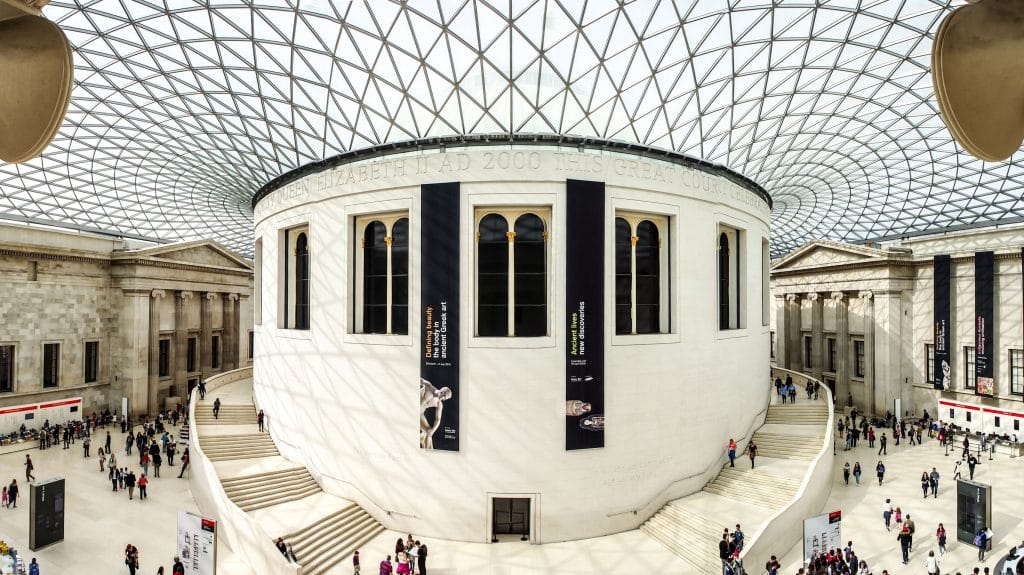
Of the many museums in London, these three are the most important in the city: British Museum, Natural History Museum, and Science Museum. You would need several days to visit them thoroughly. Some people even say it would take months!
To make the best of visiting museums in London, you need to plan your trip well. There are a lot of museums in the city of London, and all of them are huge. Even if you see everything on the run, you’ll be exhausted at the end of the day. However, in addition to these three larger museums, there are others worth a visit.
British Museum
It’s one of the oldest and one of the most visited museums in the world, with over six million visitors a year. It houses a collection of over eight million pieces from all over the world that represent the evolution of civilization since its most remote times. The British Museum opened its doors for the first time in 1759, and it’s proud to be the first secular, national, public, and free museum in the world.
Initially, it was created with the private collection of Sir Hans Sloane, a doctor and antique dealer who had died a few years earlier in 1753, and with the collection of medieval manuscripts owned by the Count of Oxford, Robert Harley. Over the years, many more pieces were added from all over the world that tell the history of humanity from pre-history to Ancient Egypt, Ancient Greece, and the Age of Discoveries.
However, this gathering of pieces from all over the world wasn’t peaceful, and many times it ignored the local and national cultures and interests of those countries. Since 1980, the Greek government has demanded that the United Kingdom returns the Elgin Marbles, a group of marble stones that were removed from the Parthenon in 1806 by the British embassador in the Ottoman Empire, Thomas Bruce.
It’s open every day from 10:00 am to 5:30 pm, and from 8:30 pm on Fridays. Admission is free.
Natural History Museum
At this free-entrance museum you’ll find over 80 million specimens and pieces linked to life on Earth, many of them already extinct.
It’s famous for its collections of bones and full skeletons of dinosaurs, in particular, the skeleton of a Diplodocus in the main hall. Its ornate architectural style granted it the name Cathedral of Nature. It’s no surprise that it attracts four million visitors a year.
The museum was inaugurated in 1881, and it’s divided into five main collections: zoology, paleontology, botany, mineralogy, and entomology (the science field that studies insects). Charles Darwin and Joseph Banks, usually known as Captain Cook’s botanist, were responsible for gathering most of the species we see here now.
Among other things, it includes an earthquake simulator, explains the water cycle, shows meteorites, and simulates a trip around the globe. Youngsters usually love this museum.
It’s open every day from 10:00 am to 5:50 pm (last entry is at 5:30 pm), and it’s open until 10:30 pm on the last Friday of every month.
Science Museum
It’s an interactive museum that explains science and how it developed over the centuries. In this museum, you’ll find references to the English Industrial Revolution, steam engines, and even the first steps in aeronautics. Science topics are explained with the help of a simulator and with film screenings. The London Science Museum has seven floors and it’s visited by three million people every year.
Open every day from 10:00 am to 6:00 pm (last entry at 5:15 pm). It’s free entrance, but you might need to purchase a ticket for some of the temporary exhibitions.
Victoria and Albert Museum
With exhibitions including paintings, sculptures, engravings, but also fashion, jewelry, and textiles, the Victoria and Albert Museum has over 4.5 million pieces from all over the world. It was founded in 1852 and showcases art and design pieces with over 5000 years of History.
It’s open every day from 10:00 am to 5:45 pm and on Fridays from 10:00 am to 10:00 pm. Admission is free.
Museum of London
This is the museum that tells the story of London, from pre-historical remote times to the present time. One of the museum’s main attractions is the model that recreates the Great Fire of 1666. The museum opened in 1976 and included several collections with pieces from pre-history, Ancient Rome, the Tudor and Stuart period, including clothes from different ages, old photographs, paintings, and other works of art.
It’s open every day from 10:00 am to 6:00 pm and admission is free.
National Maritime Museum
Located in Greenwich, London, it’s the largest maritime museum in the world. One of the top attractions is the simulator of the Titanic shipwreck, and the other one is the reproduction of the 1805 Battle of Trafalgar.
The National Maritime Museum was inaugurated in 1937 by King George VI. The museum’s collection includes portraits of men who became famous as sailors and navigators, such as James Cook.
It is open every day from 10:00 am to 5:00 pm (last entry at 4:30 pm). On Thursdays it closes at 8:00 pm and the last entry is at 7:30 pm. Admission is free, but you might need to buy a ticket for some of the temporary exhibitions.
Imperial War Museum
Here you can see from warplanes hanging from the ceiling to submarines ready to be explored. It depicts life on the trenches and shelters during the world wars. At the Imperial War Museum, inaugurated in 1917, there is an exhibition that opened in 2000 dedicated to the Holocaust, when the Nazis killed six million Jewish people.
The museum closed in 2013 for renovation work and reopened in July 2014 with a new exhibition on war spies.
It’s open every day from 10:00 am to 5:00 pm (last entry at 4:30 pm). Admission is free.
Design Museum
Design Museum is next to Tower Bridge. Inside you can visit an exhibition on design from the 20th and 21st centuries, from fashion and architecture to décor, graphic design, and car design among others.
The Design Museum is open every day from 10:00 am to 5:45 pm (last entry at 5:15 pm). Tickets cost 11,85£ for an adult.
London’s Transport Museum
London’s transportation systems were the frontrunners in different areas. At the London’s Transport Museum you can see photos and posters that show the first buses and subways in the city, as well as the horse-pulled carriages used in the city until the beginning of the 20th century. The museum is inside a steel and glass building that was part of the old Covent Garden market.
It’s open from Monday to Thursday and Saturday and Sunday from 10:00 am to 6:00 pm, and from 11:00 am to 6:00 pm (last entry 5:15 pm) on Friday. A single ticket costs £15 and a group ticket costs £9.50
Sir John Soane’s Museum
The museum is named after the architect who lived in this house, Sir John Soane. It became a museum at the beginning of the 19th century (1837) and showcases paintings, sculptures, objects, furniture, and drawings of that time.
It’s open Tuesday to Saturday from 10:00 am to 5:00 pm (last entry at 4:30 pm). Admission is free.
London Docklands Museum
It’s open since 2003 and tells the story of the Thames River and the Docklands through documents from the archive of the Port of London. In those old documents (photos, paintings, and films), you can see how the city grew by the shore of the Thames River, from ancient times to the present day.
The museum is open every day from 10:00 am to 6:00 pm (last entry at 5:40 pm). Admission is free.
Tate Gallery
It’s the United Kingdom’s museum of modern art with four galleries in the country, two of them in London, one in Cornwall, and one in Liverpool.
Tate Britain is the oldest of the four galleries and the center of British art since the 16th century. It’s by the Thames, between Lambeth Bridge and Vauxhall Bridge at Pimlico borough.
Tate Modern, right next to the Millennium Bridge, is a large international center for modern and contemporary art.
If you’re staying in the UK for longer, you can visit the Tate St. Ives right next to the Porthmeor beach in Cornwall and the Tate Liverpool at the docks, on the northwest of England.
Pubs in London
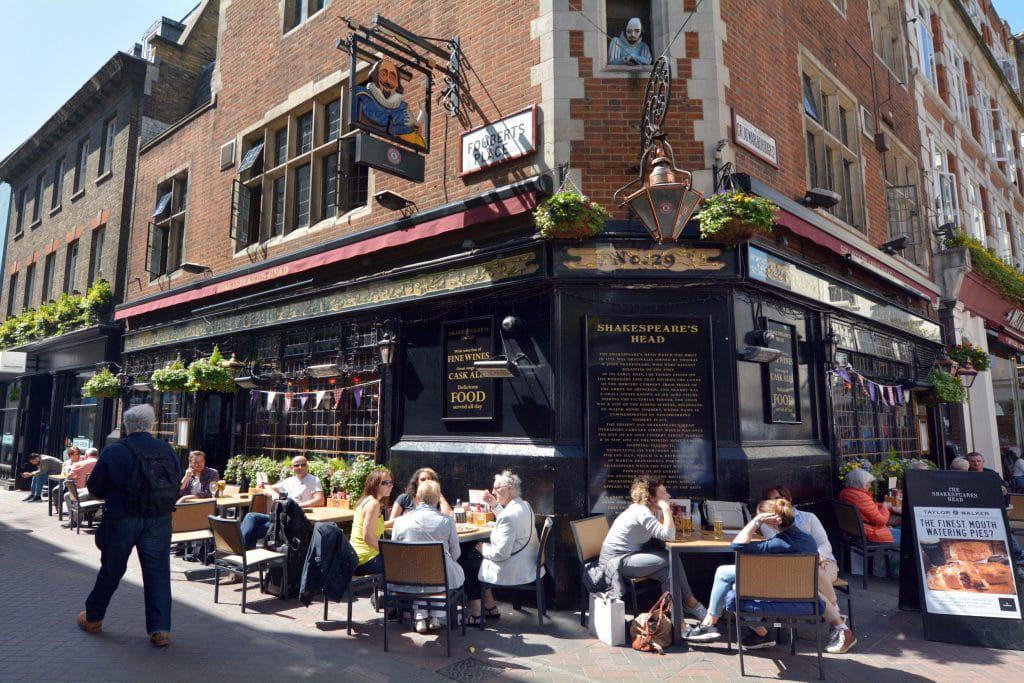
London is so much more than museums, palaces, famous monuments, or markets. One of the most interesting things to do in London is experiencing England’s typical pubs and cafes.
The Lamb & Flag
Inside Covent Garden, the Lamb & Flag is the oldest licensed pub in London, established in 1623, but in a building that dates back to the Tudor period. If possible, don’t skip this landmark in the English capital where you will literally taste History. It’s never late to learn…
Ye Olde Bell Tavern
Ye Olde Bell Tavern is also from the 17th century. Established in 1670 in The City, here you’ll find a good selection of beers. The atmosphere is now more modern and lost some of its historical appeal.
Ye Olde Cheshire Cheese
Ye Olde Cheshire Cheese is also an unmissable pub in The City. It rivals with the Lamb & Flag when it comes to age, and although it’s known different locations, it’s been around since the 14th century! At this pub you might feel like you’re at a museum instead of a tavern, considering all the tourists that come in to take photos of the corridors and historical rooms. The current pub has been here since 1667, where once was another pub since 1538 called Horn Tavern. Before that, the six-floor building had been an inn in the 13th century run by Carmelite nuns. The tavern stays true to the environment of previous centuries and at the entrance you can still see a sign that reads “Gentlemen only served in this bar.” But don’t worry ladies because this rule no longer applies.
The Mayflower
The Mayflower is by the Thames, in Rotherhithe Street, and dates back to 1550. This pub pays tribute to adventures at sea and pirates with ceilings adorned with ropes, rifles, model boats, and hanging pulleys.
Spaniards Inn
Isolated in the border between Hampstead and Highgate, Spaniards Inn has a clandestine feel since 1585. Immortalized in the book The Pickwick Papers by Charles Dickens, this London pub keeps a very authentic vibe, with low ceilings and old wood furniture.
The George Inn
Established in 1677, The George Inn on High Street in Southwark goes back to 1543 when it was just a roadside inn. It has several rooms, each with a unique and original environment, that takes us back in time.
The George and Vulture Tavern
In Cornhill, enter The George and Vulture Tavern, a late-15th-century tavern located in an area with dark alleys. The original building was destroyed in the Great Fire of 1666 but rebuilt from what remained. Its wood-paneled interior and secluded rooms call for more than just a drink. It’s the perfect place for a late dinner. It’s only open on weekdays, but coming inside is like traveling in time, from the décor to the menu, almost the same as it was 100 or 200 years ago and more affordable than other touristic spots.
Simpson’s Tavern
“The oldest chophouse in London,” this tavern is not for vegetarians. It’s a business that revolves around meat in Cornhill, at Ball Court Alley, in a dark alley. It opened in 1757, and not much has changed in over 200 years.
The Prospect of Whitby
Right by the Thames, an old haunt of pirates, smugglers, and bandits, The Prospect of Whitby pays tribute to its History with masters built-in the structure, old barrels and wheels scattered all over the place, and a noose hanging in front of the counter as a reminder of the infamous Judge George Jeffreys, “The Hanging Judge”, who stopped there for a drink after a hard day at work convicting criminals. Formerly known as Devil’s Tavern, it’s been on that location since 1520.
The Grapes
If you want to mingle with the locals, try The Grapes at Narrow Street. I won’t guarantee that regulars, who are not that used to strangers, will chat with you but at least this is a place with an authentic vibe. It’s worth the visit, at least for its age (it’s been open since 1583).
Ye Olde Mitre Tavern
It’s possibly the hardest to find tavern in London and therefore is worth looking for. In Holborn, look for this tavern with an interior that immediately stands out because of its collection of hundreds of teapots and mugs hanging from the ceiling. Located in a very narrow alleyway, you have to keep your eyes peeled so you don’t miss it. The counter is covered in colorful flowers, and the tables are old barrels. A true hidden gem since 1773.
Gordon’s Wine Bar
Definitely, one of the bars you can’t miss in London. Look for the Gordon’s Wine Bar by the Thames. It’s a bit of a selective bar, in a basement of an old Georgian house where exceptionally you won’t find any beer. However, you’ll have a great selection of wines to choose from, including Port and Madeira wine straight from the barrel.
Established in 1890, this is the oldest wine bar in London. Look for it at Villiers Street, by the Thames embankment.
Cinema in London
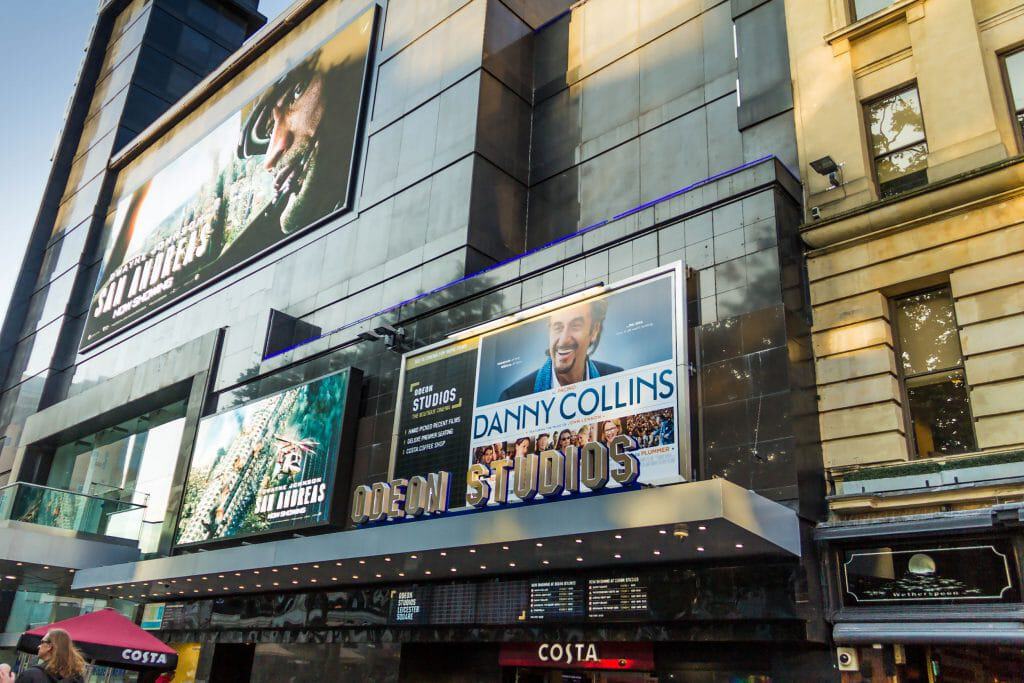
London is not Hollywood, but as a city that’s equally connected to entertainment, the movie-related events are very popular. Usually, if you spot lots of people screaming at Leicester Square, that means there’s some red carpet event or a star-studded movie premiere.
The Odeon in Leicester Square is the largest movie theater in London where most premieres take place. Vue is another famous movie theater. Odeon is one of the best, though, which is why it gets most of the long-awaited premieres. You should book tickets weeks in advance.
Going to the movies is still a popular hobby for Londoners, despite the chances for illegal downloading or on-demand services online. In London, movie theaters still have a lot of people, and it’s a great thing to do with friends or family at any time of day.
Movie theaters work hard to keep people coming. Odeon Cinemas, for example, often gives away premiere tickets or a trip to Los Angeles if you buy a ticket.
Most of the cinemas also partner with restaurants and shops offering discounts of up to 30% off for cinema cardholders.
When it comes to the movie industry, London is the capital of innovation. The Odeon Cinemas in Leicester Square showed the first digital film in Europe, in 1999. The cinema in itself is a historical building from 1937 and can accommodate almost 1,700 people.
The Empire, also in Leicester Square, is a large London cinema. It was built in 1884 as a theater and since 1928 has been adapted and modernized to show films. The Empire casino is right next door. It has several rooms, one of them with the capacity for over 1,300 people.
Of course, a movie ticket at the Odeon is more expensive, but the unique experience is worth the price. The ticket is around 9£ for an adult, and it’s cheaper if you don’t go in the evening or on weekends, but an IMAX ticket cost almost 18£. In other theaters like the Empire Cinemas in Leicester Square, a ticket can cost around 10£.
Vue is one of the most affordable with tickets costing a little over 8£. Leicester Square has nine rooms, three of them for 3D movies.
The Prince Charles cinema in Leicester Square is the cheapest with tickets costing from 4£. On the East End, the Roxy Bar and Screen is free on certain days of the week, and screens mostly old films or retrospectives.
London Events Calendar
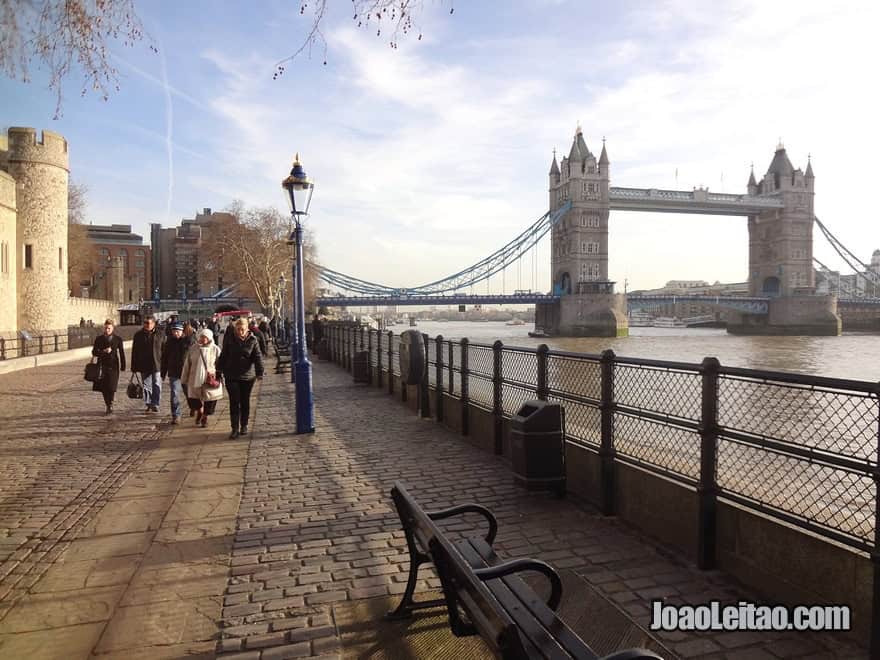
London in January
Chinese New Year
Chinese New Year is celebrated in London’s Chinatown between the end of January and the beginning of February. Streets are full of people celebrating the new year with dragons, food, and handicrafts. It’s a celebration you don’t want to miss!
London in March
Oxford and Cambridge Boat Race
March is the month for the annual rowing competition between the universities of Oxford and Cambridge. The competing teams row their boats 6.8 kilometers down the Thames and the event draws over 250,000 people to the river shores, who watch and root for their favorite team and university.
London in April
London Marathon
Every year, in mid-April, about 35,000 people run the London Marathon. It’s 42.195 kilometers between Greenwich Park and Westminster.
London in May
Chelsea Flower Show
In mid-May, gardens are created on purpose for the Chelsea Flower Show. It’s organized by the Royal Horticultural Society and takes place at the Royal Hospital Chelsea, showcasing gorgeous flowers and plants in charming gardens. It’s a famous event not only because it’s happened for hundreds of years but because it’s usually visited by the Queen, the patron of the Royal Horticultural Society.
Royal Academy Summer Exhibition
Between May and August, over 1,000 art pieces are on display, selected by academics and the audience from over 10,000 pieces. During the event, the works are available for sale for a lower price. The event takes place at Burlington House, in Piccadilly. The first one happened in 1769 and has happened every year, nonstop, ever since.
London in June
Trooping the Colour
A great British military celebration that dates back to the 17th century, with a parade that includes all different military forces of Britain and the Commonwealth. Since 1748, this event also celebrates the birthday of the British monarch, regardless of the real birth date. The militaries wearing the red coats and the tall black fur hats of the Household Division stand out as the escort of the Queen down the Mall (the London avenue that connects the Buckingham Palace to Trafalgar Square).
Royal Ascot
Few events in the United Kingdom are more glamorous than this one. About 50 km from the center of London, Ascot Racecourse, at the small town of Ascot, hosts the most important horse race in the United Kingdom. At the track, people pay attention to everything even the details that have nothing to do with horse racing, such as the outrageous hats and fancy clothes that make this the most talked about summer event in London. The first prize is 5.5 million pounds (over 7.5 million euros!). The date of the event varies, but it usually happens in June. This year it takes place between 16 and 20 June. The cheapest tickets cost 4.5£ while the most expensive tickets can cost over 1,000£!
Wimbledon Lawn Tennis Championship
Wimbledon tournament needs no introduction. It’s the oldest tennis tournament in the world and it takes place between June and July.
London in July
BBC Promenade Concerts
For music lovers, the BBC Promenade Concerts happen every day at the Royal Albert Hall from mid-July to mid-September. Tickets start from 7.50£. Performances include all music genres from classical music to gospel. Don’t miss it if you’re visiting London at that time.
London in August
Notting Hill Carnival
Samba isn’t the king of this carnival, but it’s still a fun event, sometimes with a little samba in the mix! The Notting Hill Carnival lasts for three days, with several bands and DJs playing from morning to night. The streets are full of food stalls, dancers, and people in costumes. It starts on the last Saturday of August with a party for the whole family. The next Sunday, there are street parades for kids, and the Carnival ends with a bang on Monday, the main day of the event. This year, the second of the 50th-anniversary celebration, the theme is Mardi Gras (Carnival), how it’s evolved and is celebrated all over the world, and its connection to the Notting Hill Carnival. This Carnival has nothing to do with the celebrations before Lent, which is an advantage for people who hate the cold considering the weather in August is a lot better than in February or March.
Great British Beer Festival
Who doesn’t like to have a pint or two or three? This mid-August festival that takes place at the London Olympia showcases all kinds of English beers and ciders. The Campaign for Real Ale organizes it.
London in November
Lord Mayor’s Show
On the second Saturday of November, a golden carriage travels across the Square Mile in celebration. Inside is the elected Mayor of the City of London. The celebrations continue with floats and fireworks at night. It’s basically party time in the streets of London.
Guy Fawkes Night
In 1605, Guy Fawkes tried to blow up the Parliament during the so-called Gunpowder Plot. This moment of London’s history is celebrated on 5 November with bonfires and fireworks. Did you know this historical character and moment were the inspiration behind the masks used in the blockbuster movie “V for Vendetta”?
London Film Festival
It’s three weeks of films at the cinemas of London in November, at reduced prices. There’s a booth in Leicester Square during the event, giving information about the festival and the schedules.
London in December
Christmas
It’s Christmas time! Christmas in London is magical! Streets are full of lights and Christmas markets, turning the city into a magical place. It’s true that all Christians celebrate Christmas around the world but believe me in London it’s special!
New Year
The famous Clock Tower that houses the even more famous Big Ben is already grand, don’t you think? Now imagine it as a part of the fabulous New Year’s fireworks. If you’re spending the New Year in London, try to stay somewhat sober until the 12 strikes (no need to mince words, it’s New Year’s after all!) to enjoy this amazing light show!


